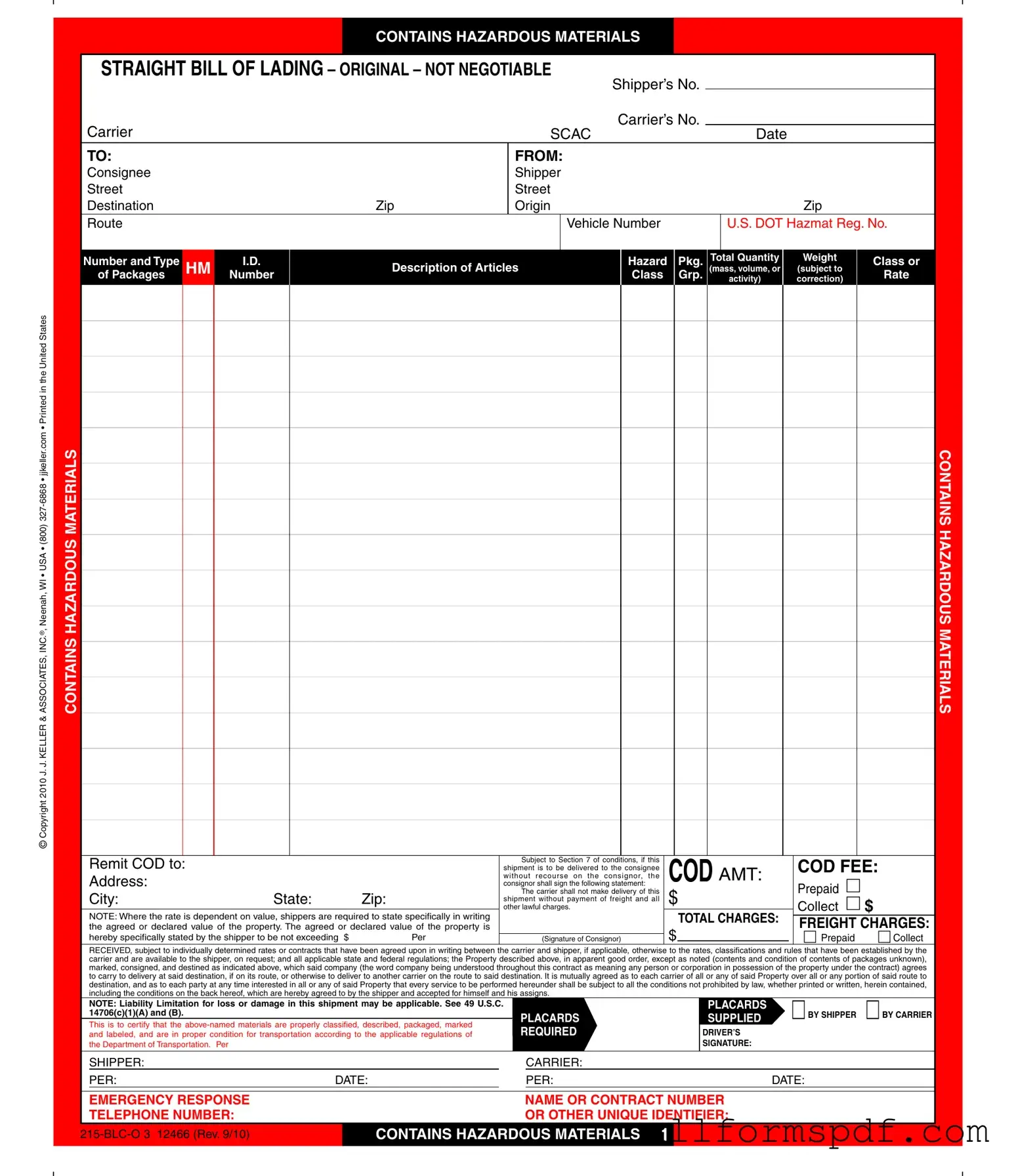Fill Out Your Hazard Bill Of Ladden Form
The Hazard Bill of Lading is a crucial document used in the transportation of hazardous materials. It serves as a receipt for the goods being shipped and outlines the terms and conditions under which the carrier agrees to transport these materials. Understanding this form is essential for shippers and carriers to ensure compliance with safety regulations and to mitigate risks associated with hazardous materials transportation.
Create My Hazard Bill Of Ladden Now
